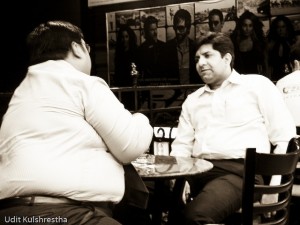When my grandmother was diagnosed with pancreatic cancer, we were all told to come visit immediately. By the time I got there, they had already given her a dose of chemotherapy. I was furious. Why do you give a dying 80 year old person a dose of chemotherapy? She never got out of bed again.
I could not understand why the doctors had given her the option of chemotherapy. She wasn’t expected to live more than a few weeks with or without it.
My family explained that this was my grandmother’s choice. She wanted the chemo. She wanted any chance she had to live longer. I was delighted she wanted to fight. And I selfishly wanted to be able to hang out with her during her final days.
What I didn’t understand at the time was that doctors have as hard a time as the rest of us talking about death. They probably have an even harder time “giving up†and accepting that there’s not really anything medicine can do to cure someone. Informative doctors want to give you all the choices and explaining the reality of your situation is hard. Maybe they did explain to my grandmother that the chemo wouldn’t prolong her life much, maybe they explained her quality of life would decrease and maybe she wan’t able to hear them because she wasn’t ready to give up on any chance no matter how small.
Reading Atul Gawande’s Being Mortal gave me a lot more insight and understanding into both our society’s way of handling death. He said we’ve given our end of life process to medicine. And doctors are not trained to understand what a patient most wants (like the ability to continue to eat chocolate or talk to your grandkids) but rather to either try to extend their life or to give them all the medical options without helping them weigh what those options mean within their choices. We are letting the medical field decide how we will live our last days. They may be able to help, but they are not in the business of figuring out how you want to live and then facilitating that. Instead they tell you what medical options you have and try to do the most they can to prolong your life even at the expense of comfort or quality of life. And there’s rarely a time when doctors can’t do something more. They can insert feeding tubes, try experimental drugs, remove parts of tumors, but those things might not always help you live the life you want.
Atul Gawande’s message really resonated with me when — while reading his book! — I called an ambulance for someone who didn’t want one. They clearly said they did not want an ambulance and did not want to go to the emergency room. I could not in good conscious not call an ambulance. They weren’t in a position to stop me from calling one, so I called for one but it weighed on me. I was reading a book about how we should be able to choose the medical care we want and I clearly went against someone’s wishes. Atul Gawande says this is a natural conflict, “We want autonomy for ourselves and safety for those we love.†(In my defense, I did not think they were capable in that moment to evaluate whether they needed an ambulance or not. One of my friends suggested just waiting until the person passes out and then its complied consent. I figured that was even worse. Looking forward, if someone you know is likely to be in that position, ask them their wishes ahead of time. Unfortunately, we don’t usually have that option until someone is clearly ill.)
“We want autonomy for ourselves and safety for those we love.â€â€Šâ€” Atul Gawande
He recommended this set of questions for helping people decide on treatment options:
What is your understanding of the situation and its potential outcomes?
What are your fears and what are your hopes?
What are the trade-offs you are willing to make and not willing to make?
And what is the course of action that best serves this understanding?
An example of a trade-off might be, are you willing to risk being in a wheel chair in order to get rid of some of the pain? Are you willing to lose your sense of taste to see if this chemotherapy will work?
In particular, I thought his trick of asking “what’s the longest anyone has lived with this treatment†instead of “how long do you expect me to live†was a very good one. He said “Sixty-three percent of doctors overestimated their patient’s survival time. Just 17 percent underestimated it. The average estimate was 530 percent too high. And the better the doctors knew their patients, the more likely they were to err.â€
Throughout the book, Atul Gawande used very personal examples of family members and friends who were faced with difficult end of life decisions. He described cases where he thought he could have done better and cases where he helped people make the right decisions. The best, most difficult ones seemed to be the ones that didn’t pursue every chance medicine could offer.
As for my grandmother, we brought her home and worked with hospice. She died in her own bedroom surrounded by all her children and grandchildren. While I’m sure she was not ready to go, I’m sure that’s how she would have chosen to go.
I recommend reading Atul Gawande’s Being Mortal.
Originally published on Medium.





